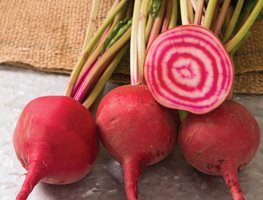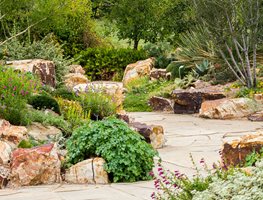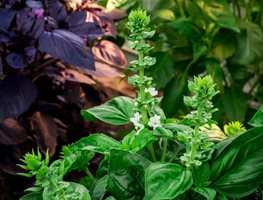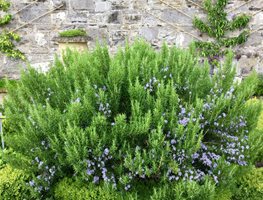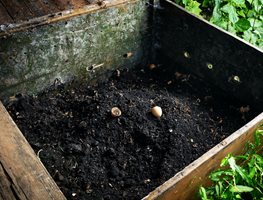10 Gardening Activities for August in the Rocky Mountain Region
Here are a few garden reminders, inspiring ideas, maintenance tips, and places to visit this month.
1. Plant Cool-Season Crops
Since the first frost for this region will likely come anywhere from mid-September to October (depending on where you live), it’s getting a little late to plant vegetables that will mature before the first frost. Fortunately, there are several varieties that mature fairly quickly—why not make the most out of the last warm days and grow food while you still can? Plant quickly maturing varieties such as Salanova® Red Butter or Teodore lettuce; Early Wonder, Chioggia Guardsmark, or Touchstone Gold beets; as well as Scarlet Nantes, Deep Purple, Nectar, Napoli, or Mokum carrots.
2. Visit the Gardens on Spring Creek in Fort Collins
The Gardens on Spring Creek is a botanic garden located on the Spring Creek corridor in Fort Collins, Colorado. It’s composed of 18 acres of gardens designed to educate novice to advanced gardeners about plants, horticulture, and environmental stewardship. There are more than 10 different types of gardens including the Rock Garden, the Garden of Eatin’, the Undaunted Garden (a native and non-native 3-acre xeriscape garden), and the Foothills and Prairie Garden (with native trees, shrubs, grasses, and other perennials).
3. Read the Book Plant-Driven Design
Scott Ogden and Lauren Springer-Ogden’s book, Plant-Driven Design, is a compendium of plant know-how and wisdom for realist gardeners. It contains the duo’s perspective on creating gardens filled with regionally appropriate plants. The gardens they design are mainly in the Rocky Mountains or prairie regions. Some plants they highlight are native; others are not, but they have adapted to the climate. There’s no doubt that the use of native plants is necessary, but it’s refreshing to see gardens that wisely use a mix of natives and non-natives to create well-designed gardens that are right for the locale.
4. Water Trees and Plants Deeply
Trees can go through a lot of stress in extreme temperatures. Use a water bubbler attached to a hose to do a few extra watering sessions around tree roots this summer. Deep watering for a longer period is better for trees than watering a little bit each day. If you have an irrigation or drip system verify that it’s watering trees and large shrubs for longer periods once or twice a week when it’s hot instead of watering daily. You may also want to hook up tree-watering stakes or install tree-watering bags if you have newer trees or varieties that need more consistent watering.
5. Harvest Mature Produce Daily & Store the Surplus
Summer heat will help bring fruits and vegetabes in your garden to maturity, so be sure to walk the garden frequently to harvest ripe produce. The best time to harvest tomatoes is in the morning. After picking them, bring them inside and chill them. Doing this will extend their shelf life and help avoid the mushy, grainy taste. Be sure to harvest summer squash before they get too large—you’ll need to read seed packets to see how big the varieties you planted should be at maturity. Picking green beans, cutting lettuce, and harvesting herbs will help them continue to produce. If you have too much produce, do some canning, make sauces, and dry herbs. Some people find that freezing sauce is easier than canning it (Kevin Lee Jacobs has a nice “Lazy Sunday” tomato sauce recipe that he freezes after making). You can also freeze herb leaves instead of drying them. Get more tips for preserving your harvest.
Don't miss what to do in the garden each month, make sure you're getting our weekly newsletter.
6. Plant Microgreens Indoors or in a Small Greenhouse
Microgreens can be an important source of nutrients in salads and other dishes. Many also add an interesting flavor component. Arugula microgreens have a spicy, nutty flavor. Red and green mustard are spicy. Scallions have a soft onion flavor. Cress have a peppery flavor. There are planting kits and indoor growing stations designed for growing microgreens, so you can do some gardening indoors and escape the summer heat. If you want to buy microgreen seeds, Johnny’s Selected Seeds has a wide selection. They also have a helpful microgreen tutorial video.
7. Pinch, Trim, and Deadhead
The heat can take a toll on the garden in the form of bolting plants, flowering herbs, spent flowers, and dead flowers. Spend some time in the garden this month pinching back your herbs if they start to flower. This will keep them producing flavorful foliage for a longer period of time. If salad greens or other plants have begun to bolt, trim them back, too. If you want to keep your garden tidy and free of spent flowers, do a little deadheading.
8. Protect & Preserve Beneficial Insects
Native bees, ladybugs, native parasitic wasps, damsel bugs, lacewings, spiders, and other beneficial insects eat or kill the “bad” bugs such as aphids, hornworms, thrips, whiteflies, mealybugs, borers, cucumber beetles, and spider mites. There are a few ways to attract and protect beneficial insects: Avoid using insecticides because they don’t only kill the bad bugs—they kill the good bugs, too. Leave spiders alone because they help control insect populations. Put more native plants in your garden to attract beneficial insects (find natives for your area on the National Wildlife Federation’s native plant finder). Remove worms such as the caterpillars of cabbage white butterflies and Japanese beetles from your garden by hand. Let sow bugs and pill bugs be—they help recycle nutrients. To learn more about bringing wildlife into your garden, read Doug Tallamy’s wonderful book The Living Landscape: Designing for Beauty and Biodiversity in the Home Garden.
9. Control Mosquitos
To control mosquito larvae, place mosquito dunks in 5-gallon buckets of water and straw. The water and straw simulates the perfect mosquito breeding conditions, but the dunks will kill the hatched larvae. Avoid using mosquito foggers. The foggers also kill beneficial insects and actually aren’t that effective at controlling mosquitos. You can also install various plants around your garden to help repel mosquitos: citronella grass, lavender, rosemary, scented geraniums, and more. You can grow these plants in large pots and place them around your patio or even plant them in smaller pots and use them as centerpieces for tables.
10. Make Your Own Compost
If you’re making your own compost, ramp up production during the summer heat. Add a balanced mix of food scraps (vegetable peels, fruit waste, eggshells), coffee grounds, wood ash, and green waste from the lawn, trees, or garden that’s in smaller pieces or shredded. Your compost pile or bin should not smell. If it does, something is wrong or perhaps you added something to the compost heap by mistake. Avoid putting meat, bones, fish scraps, paper, sawdust, woody branches, or synthetic fertilizer in the compost heap. Charles Downing has a good tutorial video that explains his composting methods. If you’re new to composting, you can use a wood bin, plastic bin, or a tumbler as your container.
If you enjoyed this information, sign up for our weekly newsletter. Each week, you'll get Garden Design's best delivered right to your inbox including design tips, plant picks, great gardens, outdoor living products, and events to enjoy — along with monthly gardening checklists just for your area.
Do you know someone who would enjoy this Rocky Mountain Region gardening information? Why not share it with them?
When you purchase products through links on our site, we may receive an affiliate commission. Thank you for your support.
